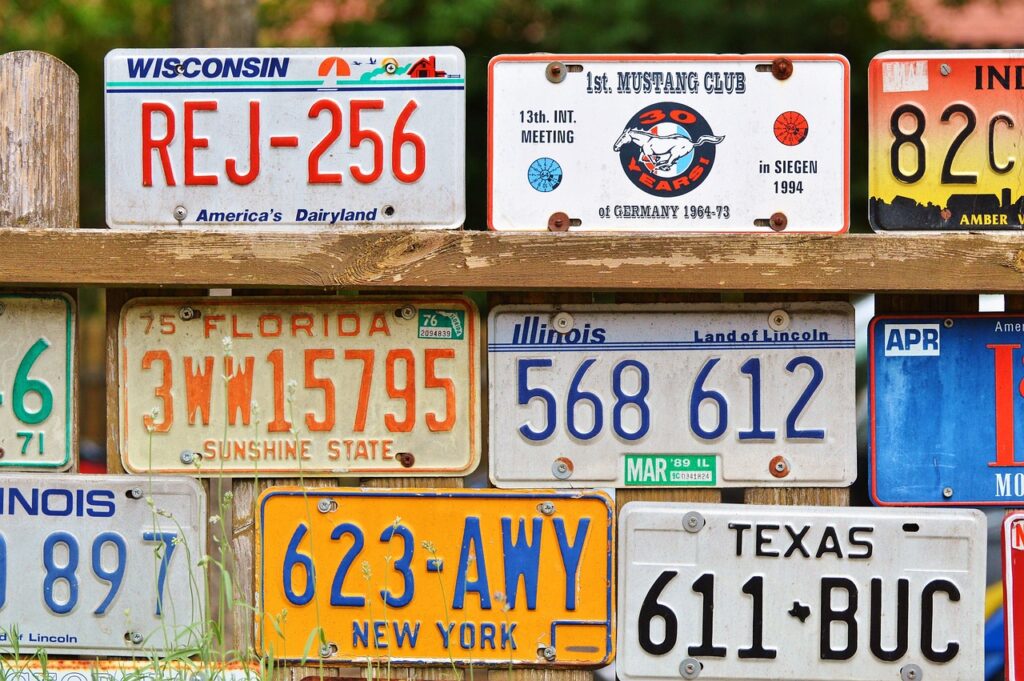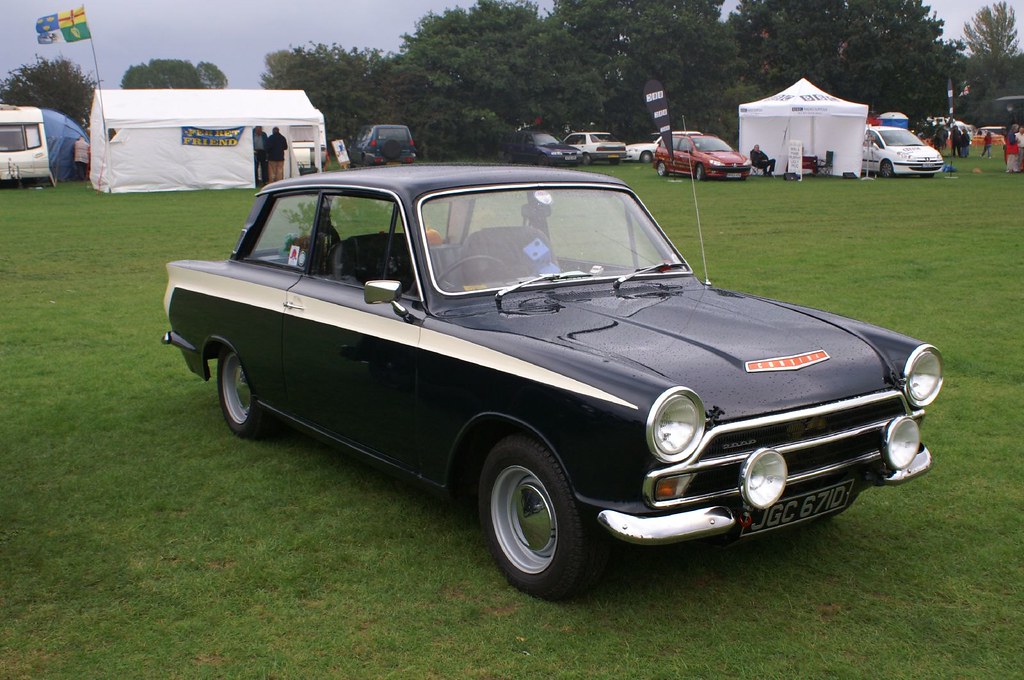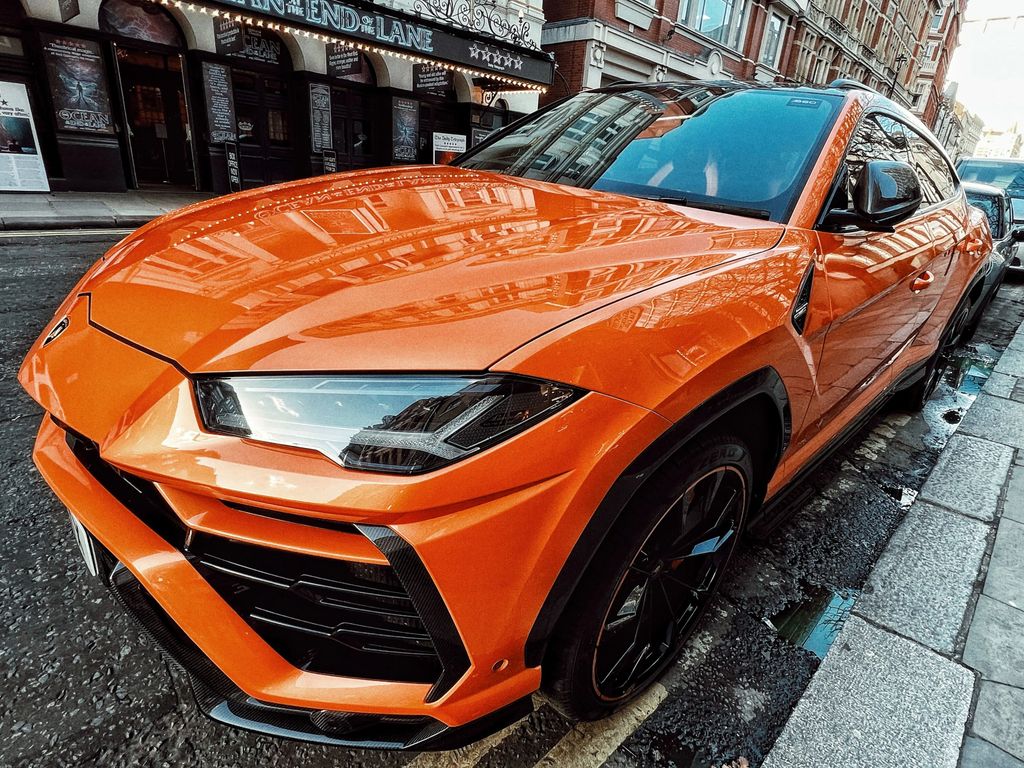
When you think about American performance cars, you can’t help but picture the muscle cars that took the roads by storm during their golden era. This was a time when raw power and style were essential, and manufacturers were pushing the limits of what cars could do. These iconic vehicles changed the landscape of American automotive culture and still hold a special place in the hearts of car enthusiasts today. From the mid-1960s to the early 1970s — what many still revere as the Golden Age of American Muscle — a fleet of snarling V8 beasts rolled off assembly lines with one purpose: dominate the quarter mile and make your heart race like a double shot of espresso. This was when automakers wore horsepower on their sleeves and dared each other to push limits, creating machines that embodied the raw, unadulterated spirit of a power-hungry nation. Ah, simpler times.
We’re heading back to the era when your dad’s garage smelled like carb cleaner and the rumble of a big block V8 could stir a soul from two counties over. This isn’t about factory restomods or cars inspired by the originals. Just unfiltered, leaded-fuel brutes that made America’s driveways feel like Daytona. We’re looking at muscle cars that truly embodied that time when power was all that mattered, weighing their cultural impact, raw performance, and undeniable street cred. These were the cars that made teenage boys instantly cooler, and probably got them into more trouble.
These 15 muscle cars not only defined an era but also represented the peak of automotive design and engineering. From their powerful engines to their striking looks, these cars became symbols of freedom and rebellion. Get ready to dive into a world where speed and style ruled the roads and left a lasting legacy. We’re about to explore the true kings of the asphalt, the machines that roared their way into legend and continue to captivate enthusiasts decades later. Hold onto your hats, because this is going to be a wild ride.

1. **1964 Pontiac GTO: The Godfather of Muscle**You can’t start this list without paying homage to the original don, the car that effectively invented the term “muscle car.” The 1964 Pontiac GTO took GM’s mid-size Tempest, ripped out its sensible V6, and stuffed in a 389-cubic-inch V8. Available with 325 horsepower or a hotter 348hp Tri-Power option, it worked terrifyingly well and birthed a revolution. John DeLorean, the man behind it, deserves a statue made of chrome.
Stacked headlights, a wide body, and dual hood scoops gave the GTO a distinct and muscular appearance. It wasn’t just about looks, though; this car could hit speeds over 100 mph, cementing its reputation as a performance icon. With a 0–60 mph time in the low 6-second range and quarter-mile times in the mid-14s, it was blistering for the day.
The GTO roared into high school parking lots, conquered drive-ins, and never looked back. Critics scoffed, but teenagers emptied savings accounts. A legend was born, launching a horsepower arms race that made Detroit automakers collectively lose their minds, and for that glorious insanity, we’re forever thankful. Its success paved the way for an entire generation of muscle cars.
Car Model Information: 1966 Pontiac GTO Coupe
Name: Pontiac GTO
Caption: 2005 Pontiac GTO
Manufacturer: Pontiac (automobile),Holden
Class: Mid-size car,Compact car,Mid-size car
Production: 1963–1974,2003–2006
Predecessor: Pontiac Tempest
Layout: Front-engine, rear-wheel-drive layout
ModelYears: 1964-1974 2004-2006
Categories: 1970s cars, 2000s cars, All articles with unsourced statements, Articles with short description, Articles with unsourced statements from October 2008
Summary: The Pontiac GTO is a front-engine, rear-drive, two-door, and four-passenger automobile manufactured and marketed by the Pontiac division of General Motors over four generations from 1963 until 1974 in the United States — with a fifth generation made by GM’s Australian subsidiary, Holden, for the 2004 through 2006 model years.
The first generation of the GTO is credited with popularizing the muscle car market segment in the 1960s. Some consider the Pontiac GTO to have started the trend with all four domestic automakers offering a variety of competing models.
For the 1964 and 1965 model years, the GTO was an optional package on the intermediate-sized Pontiac LeMans. The 1964 GTO vehicle identification number (VIN) started with 22, while the 1965 GTO VIN began with 237. The GTO was designated as a separate Pontiac model from 1966 through 1971 (VIN 242…). It became an optional package again for the 1972 and 1973 intermediate LeMans. For 1974, the GTO was an optional trim package on the compact-sized Ventura.
The GTO model was revived for the 2004 through 2006 model years as a captive import for Pontiac, a left-hand drive version of the Holden Monaro, itself a coupé variant of the Holden Commodore.
Get more information about: Pontiac GTO
Buying a high-performing used car >>>
Brand: Pontiac Model: GTO
Price: $59,991 Mileage: 4,408 mi.
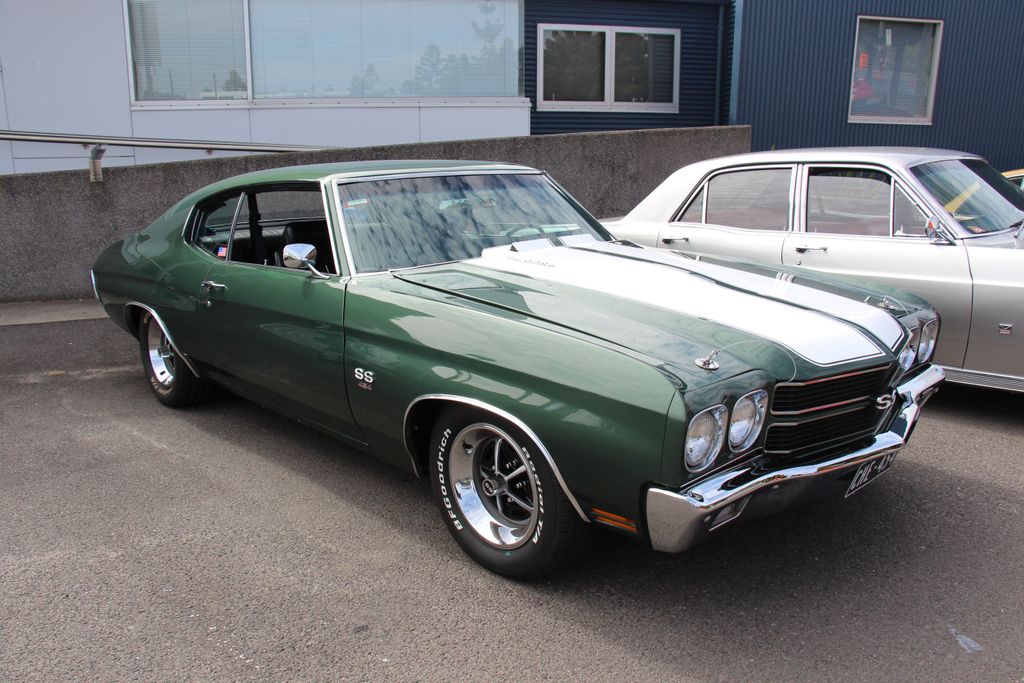
2. **1970 Chevrolet Chevelle SS 454: King Kong in a Suit**By 1970, GM had finally dropped its ridiculously conservative 400-cubic-inch engine limit on intermediate-sized cars, and Chevy wasted no time going utterly bonkers. Enter the 1970 Chevrolet Chevelle SS 454, particularly the legendary LS6 variant. This beast laid down a “factory-rated” 450 hp and 500 lb-ft of torque, though everyone knew that was sandbagging of epic proportions. Dyno tests routinely showed these engines pushing closer to 500 hp.
This muscle car was a masterpiece of design, combining brute strength with sleek styling. Its wide, muscular stance, accented by signature racing stripes and a cowl induction hood, made it instantly recognizable. With its powerful 454-cubic inch V8 engine, aggressive front grille, and racing-ready appearance, the Chevelle SS quickly became one of the most iconic muscle cars of its era.
It could light up the rear tires in three gears and still pull up to the country club looking respectable. This brute was wrapped in a surprisingly sophisticated package, making it an icon for those who wanted both manners and enough muscle to rearrange traffic. Those dual stripes and the functional cowl induction hood are still symbols of intimidation on American roads, deeply revered. It could outrun you while also out-styling you. Just pack it up, boys.
Car Model Information: 2018 Jeep Grand Cherokee Limited X
Name: Chevrolet Chevelle
Caption: 1970 Chevrolet Chevelle SS 396 Sport Coupe
Manufacturer: Chevrolet
Production: 1963–1977
ModelYears: 1964–1977
Class: Mid-size
Platform: GM A platform (RWD)
Layout: FR layout
Successor: Chevrolet Malibu
Categories: 1970s cars, All articles needing additional references, All articles that may contain original research, All articles with specifically marked weasel-worded phrases, All articles with unsourced statements
Summary: The Chevrolet Chevelle is a mid-sized automobile that was produced by the Chevrolet division of General Motors (GM) in three generations for the 1964 to 1977 model years. Part of the GM A-body platform, the Chevelle was one of Chevrolet’s most successful nameplates. Body styles included coupes, sedans, convertibles, and station wagons. The “Super Sport” versions were produced through the 1973 model year and Lagunas from 1973 through to 1976.
After a four-year absence, the El Camino was reintroduced as part of the new Chevelle lineup in 1964.
From 1964 to 1969, GM of Canada sold a modified version of the Chevelle that included a Pontiac-style grille, and a LeMans instrument panel, marketed as the Beaumont.
The Malibu was the top-of-the-line model to 1972, and completely replaced the Chevelle nameplate starting with the redesigned, and downsized 1978 model year.
Get more information about: Chevrolet Chevelle
Buying a high-performing used car >>>
Brand: Chevrolet Model: Chevelle SS 454
Price: $19,998 Mileage: 67,042 mi.

3. **1969 Dodge Charger R/T: The Duke of Speed**Even without the “General Lee” fame, which probably introduced more people to muscle cars than any magazine ever could, the 1969 Dodge Charger R/T would’ve been a street legend. This thing was pure menace. Its fastback roofline, hidden headlights, and wide, aggressive body gave it an iconic silhouette that stood out on any road, capturing public attention.
Equipped with either the formidable 440 Magnum (375 hp) or the ferocious 426 HEMI (425 hp), this beast combined bold, aggressive design with blistering performance. The Charger wasn’t just about muscle; it also had style, featuring a fastback design and hidden headlights that made it stand out. A powerful 426 Hemi V8 delivered a whopping 425 horsepower, hitting 0 to 60 mph in just over 5 seconds.
The hidden headlights and those iconic “coke-bottle” curves made it utterly seductive, while its Mopar roots made it undeniably feral. You didn’t just drive a Charger R/T; you wrangled it. This was the car you bought if you wanted to outrun not just the cops, but maybe your own responsibilities. Its legacy is so deeply etched in American pop culture that it’s recognized by silhouette alone.
Car Model Information: 2018 Jeep Grand Cherokee Limited X
Name: Dodge Charger
Caption: 1969 Dodge Charger
Manufacturer: Dodge
Production: 1966–1978,1981–1987,2005–present
ModelYears: 1966–1978,1982–1987,2006–present
Categories: 1960s cars, 1970s cars, 1980s cars, 2000s cars, 2010s cars
Summary: The Dodge Charger is a model of automobile marketed by Dodge in various forms over eight generations since 1966.
The first Charger was a show car in 1964. A 1965 Charger II concept car resembled the 1966 production version.
In the United States, the Charger nameplate has been used on mid-size cars, personal luxury coupes, subcompact hatchbacks, and full-size sedans.
Get more information about: Dodge Charger
Buying a high-performing used car >>>
Brand: Dodge Model: Charger R/T
Price: $19,998 Mileage: 67,042 mi.

4. **1968 Ford Mustang GT Fastback: The Bullitt Missile**Let’s get one thing straight: the Mustang may have launched the pony car craze in ’64, but it grew serious fangs by ’68. Thanks in large part to the 390 GT fastback that Steve McQueen hurled through the streets of San Francisco in Bullitt. That Highland Green machine wasn’t just a movie prop; it was a rolling revolution, instantly cementing the Mustang’s place in automotive legend.
The 1968 Ford Mustang GT Fastback is a true classic, capturing the spirit of American performance with its sleek design and powerful engine options. You could choose a 289 cubic inch V8 or go for the big 390 cubic inch V8 (325 hp), both delivering impressive horsepower. The GT model came with dual exhausts and sportier suspension for better handling.
This Mustang perfectly paired striking looks with the kind of rubber-scorching authority that gave its bravado real substance. McQueen made it immortal, Ford made it iconic. It’s the reason countless gearheads still dream of owning a dark green fastback, even if their driving skills are more “erratic civilian” than “cool detective.” It’s not just a car; it’s an experience.
Car Model Information: 2024 Ford Mustang GT
Name: Ford Mustang
Caption: 2018 Ford Mustang GT 5.0
Aka: Ford T5 (Germany)
Manufacturer: Ford Motor Company
Production: March 1964 – present
ModelYears: 1965–present
Class: Unbulleted list
BodyStyle: Unbulleted list
Layout: Front-engine, rear-wheel-drive layout
Categories: 1970s cars, 1980s cars, 1990s cars, 2+2 coupés, 2000s cars
Summary: The Ford Mustang is an American automobiles manufactured and marketed by Ford since 1964, as Ford’s longest nameplate in continuous production. Currently in its seventh generation, it is the fifth-best selling Ford car nameplate. The namesake of the “pony car” automobile segment, the Mustang was developed as a highly styled line of sporty coupes and convertibles derived from existing model lines, initially distinguished by its pronounced “long hood, short deck” proportions.
Originally predicted to sell 100,000 vehicles yearly, the 1965 Mustang became the most successful vehicle launch since the 1927 Model A. Introduced on April 17, 1964 (16 days after the Plymouth Barracuda), over 400,000 units were sold in its first year; the one-millionth Mustang was sold within two years of its launch. In August 2018, Ford produced the 10-millionth Mustang; matching the first 1965 Mustang, the vehicle was a 2019 Wimbledon White convertible with a V8 engine.
The success of the Mustang launch led to multiple competitors from other American manufacturers, including the Chevrolet Camaro and Pontiac Firebird (1967), AMC Javelin (1968), and Dodge Challenger (1970). It also competed with the Plymouth Barracuda, which was launched around the same time. The Mustang also had an effect on designs of coupes worldwide, leading to the marketing of the Toyota Celica and Ford Capri in the United States (the latter, by Lincoln-Mercury). The Mercury Cougar was launched in 1967 as a unique-bodied higher-trim alternative to the Mustang; during the 1970s, it included more features and was marketed as a personal luxury car.
From 1965 until 2004, the Mustang shared chassis commonality with other Ford model lines, staying rear-wheel-drive throughout its production. From 1965 to 1973, the Mustang was derived from the 1960 Ford Falcon compact. From 1974 until 1978, the Mustang (denoted Mustang II) was a longer-wheelbase version of the Ford Pinto. From 1979 until 2004, the Mustang shared its Fox platform chassis with 14 other Ford vehicles (becoming the final one to use the Fox architecture). Since 2005, Ford has produced two generations of the Mustang, each using a distinct platform unique to the model line.
Through its production, multiple nameplates have been associated with the Ford Mustang series, including GT, Mach 1, Boss 302/429, Cobra (separate from Shelby Cobra), and Bullitt, along with “5.0” fender badging (denoting 4.9 L OHV or 5.0 L DOHC V8 engines).
Get more information about: Ford Mustang
Buying a high-performing used car >>>
Brand: Ford Model: Mustang
Price: $39,564 Mileage: 13,465 mi.

5. **1970 Plymouth Road Runner Superbird: The Winged Warrior**If absurdity had a horsepower rating, the 1970 Plymouth Road Runner Superbird would’ve pegged the meter and then some. This is a standout classic, known for its wild aerodynamic design, featuring a distinctive pointy nose and a massive rear wing. It was built for one reason only: to dominate NASCAR’s super speedways, specifically to lure Richard Petty back to Plymouth.
That insane nosecone and towering, sky-high rear wing were born in wind tunnels, refined for maximum downforce, and scared both Ford and Chevy silly on the track. With a choice of powerful engines, you could opt for the legendary 426 Hemi V8, delivering around 425 horsepower. This beast could fly through the quarter-mile in about 13.5 seconds.
Underneath the cartoonish skin was a serious street machine, available with either the mighty 440 Super Commando (375 hp) or the legendary 426 HEMI (425 hp). Only about 1,935 Road Runner Superbirds were made, making them literal unicorns today. But in 1970, this was the muscle car equivalent of flipping the bird to conformity, doing it at 150+ mph. You’ll appreciate its blend of style and speed.
Car Model Information: 2018 Jeep Grand Cherokee Limited X
Name: Plymouth Superbird
Manufacturer: Plymouth (automobile)
Wheelbase: 115.8 in
Abbr: on
Length: Convert
Width: 76.4 in
Height: 61.4 in
Weight: Convert
Production: 1970
Assembly: Detroit
Class: muscle car,race car
BodyStyle: coupe
Platform: Chrysler B platform
Layout: FR layout
Engine: cvt,Chrysler Hemi engine,V8 engine,cvt,Chrysler RB engine#440,V8 engine
Related: Plymouth Road Runner,Dodge Charger Daytona
Transmission: Automatic transmission,TorqueFlite
Designer: Gary Romberg
Categories: 1970s cars, All articles with unsourced statements, Articles with short description, Articles with unsourced statements from March 2010, Commons category link is on Wikidata
Summary: The Plymouth Superbird is a highly modified, short-lived version of the Plymouth Road Runner with applied graphic images as well as a distinctive horn sound, both referencing the popular Looney Tunes cartoon character Road Runner. It was the factory’s follow-up stock car racing design, for the 1970 season, to the Dodge Charger Daytona of 1969, and incorporated many engineering changes and modifications (both minor and major) garnered from the Daytona’s season in competition.
The car’s primary rivals were the Ford Torino Talladega and Mercury Cyclone, a direct response to the Mopar aero car. It has also been speculated that a motivating factor in the production of the car was to lure Richard Petty back to Plymouth. Both of the Mopar aero cars famously featured a protruding, aerodynamic nosecone, a high-mounted rear wing and, unique to the Superbird, a horn mimicking the Road Runner’s signature “beep, beep.”
Superbirds equipped with the top-of-the-line 426 cu in (7.0 L) Hemi engine with a pair of four barrel Carter AFB carburetors (2x4bbl) producing 425 hp (317 kW) could accelerate from 0 to 60 mph (97 km/h) in 5.5 seconds.
Get more information about: Plymouth Superbird
Buying a high-performing used car >>>
Brand: Plymouth Model: Road Runner Superbird
Price: $19,998 Mileage: 67,042 mi.
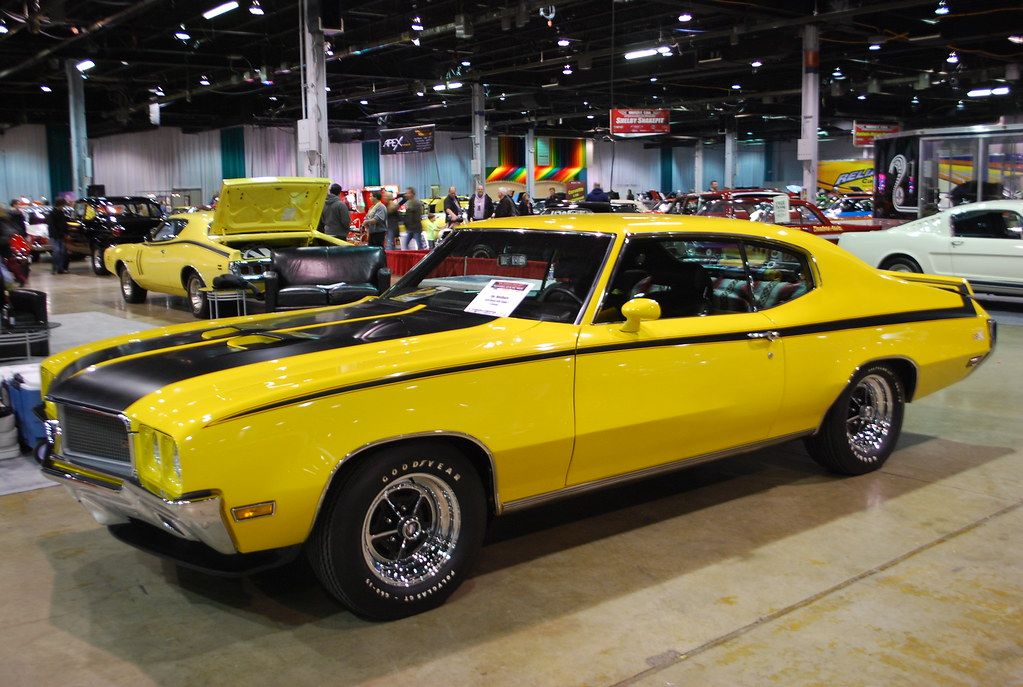
6. **1971 Buick GSX Stage 1: The Gentleman’s Sledgehammer**If you still think Buicks are exclusively for retirement homes and bingo nights, the 1971 Buick GSX Stage 1 is your rude awakening. This was Buick’s mic-drop moment, serving up a massive 455-cubic-inch V8 that, in Stage 1 trim, produced a mind-boggling 510 lb-ft of torque — the most of any production car at the time. Horsepower was conservatively rated at 345 hp, but everyone knew it was much higher.
This model didn’t just rely on raw power; it also stood out for its unique and bold design. Featuring eye-catching color schemes like Saturn Yellow or Apollo White, paired with black stripes, it was impossible to miss. In its iconic livery with aggressive spoilers, it looked like a Wall Street broker on a warpath, pure chaos under the hood.
The Stage 1 tuning, with its hotter cam, revised cylinder heads, and better breathing, turned it into a street-savvy bruiser. It could mop the floor with lighter, more famous competitors in a straight line. With only 678 units produced, it’s among the rarest of its kind, capable of going from 0 to 60 mph in just around 5.5 seconds. Buick may have worn a velvet glove, but it was wrapped around a brass knuckle.
Car Model Information: 2018 Jeep Grand Cherokee Limited X
Name: Gran Sport
Logo: Buick gs emblem.png
Producttype: Performance car
Currentowner: General Motors
Producedby: General Motors
Introduced: [object Object]
Related: T-Type
Markets: U.S.
Categories: All Wikipedia articles in need of updating, All articles with unsourced statements, Articles with short description, Articles with unsourced statements from September 2020, Articles with unsourced statements from September 2025
Summary: The Gran Sport name has been used on several high-performance cars built by General Motors for its Buick brand since 1965. In the GM brands hierarchy, Buick was surpassed in luxury and comfort appointments only by Cadillac, which did not produce performance models. As a result, the Buick GS series were the most opulently equipped GM sport models of their era.
The Gran Sport performance enhancements on all Buick products during this era sought to affirm Buick’s tradition of producing powerful and comfortable products going back to the 1930s when all Buicks of the time were upgraded to the Buick Fireball Straight Eight, then installed the 278 cu in (4.6 L) Roadmaster engine in the shortest model Special and introduced the Century, known as “the banker’s hot rod” with a three speed synchromesh manual transmission. The Gran Sport sought to identify cars that were fun to drive with a luxury approach.
Get more information about: Buick Gran Sport
Buying a high-performing used car >>>
Brand: Buick Model: GSX Stage 1
Price: $19,998 Mileage: 67,042 mi.
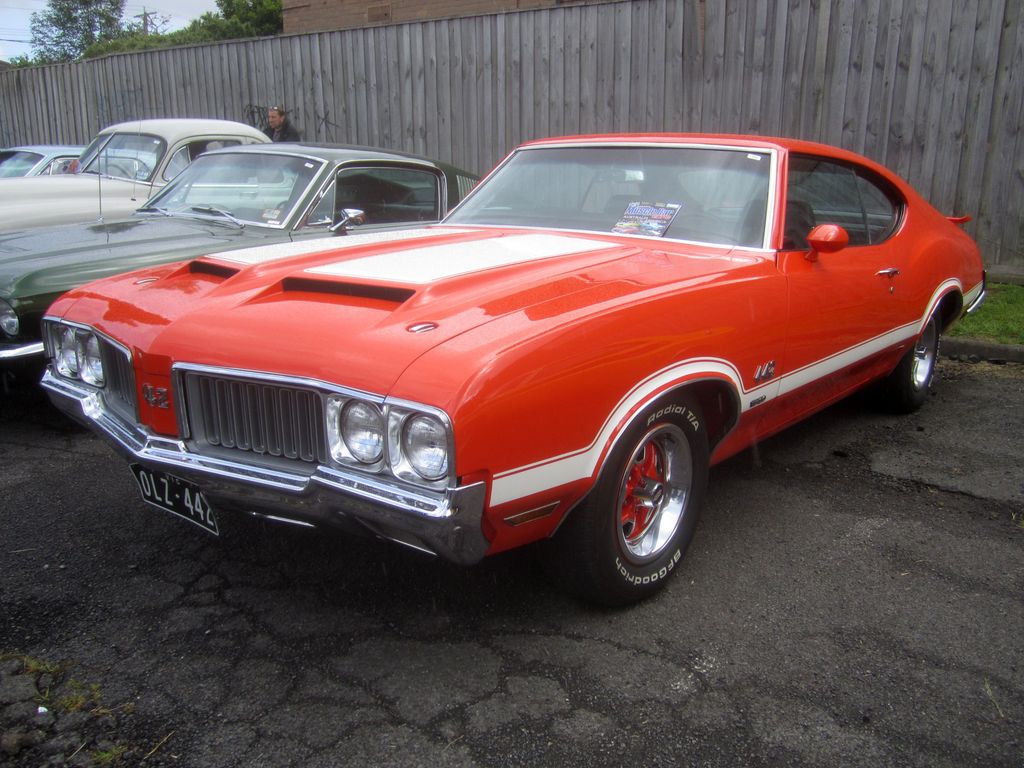
7. **1970 Oldsmobile 442 W-30: The Thinking Man’s Muscle**Oldsmobile never quite got the flashy headlines of its GM siblings, but the 1970 Oldsmobile 442 W-30 was the connoisseur’s choice, the muscle car for the guy who knew what was up. Packing a serious 455 V8, conservatively rated at 370 hp and 500 lb-ft of torque in W-30 spec, it was built to embarrass more famous rivals at the strip.
The W-30 was a very quick and surprisingly surgical car for its size, featuring functional ram air induction and factory blueprinted internals. The name ‘442’ stood for a four-barrel carburetor, a four-speed manual transmission, and dual exhaust, all contributing to its powerful yet smooth performance. Its clean, sharp lines and aggressive grille made it an attractive option for speed and style.
Optional fiberglass hood, lighter inner fenders, and aluminum intake manifold made it lighter and more lethal than the standard 442. It was the car you bought when you didn’t need to yell to be heard, silently setting trap speeds others only dreamed of. The 442 had the soul of a racer but the manners of a gentleman — a dual-personality masterpiece. Collectors know the W-30 badge means serious business, a nod to an understated king.
Now, let’s crank up the volume and dive headfirst into the rest of these automotive titans. This isn’t just about raw power, though there’s plenty of that; it’s about the machines that pushed boundaries, challenged conventions, and cemented their places in the pantheon of petrol-powered legends. Get ready to meet the beasts that left an indelible mark on automotive history.
Car Model Information: 2018 Jeep Grand Cherokee Limited X
Name: Oldsmobile 442
Manufacturer: Oldsmobile
ModelYears: 1964–1980,1985–1987,1990–1991
Class: Muscle car
Layout: FR layout
Caption: 1971 Oldsmobile 442
Categories: 1960s cars, 1970s cars, 1980s cars, All articles with unsourced statements, Articles with short description
Summary: The Oldsmobile 4-4-2 is a muscle car produced by Oldsmobile between the 1964 and 1987 model years. Introduced as an option package for US-sold F-85 and Cutlass models, it became a model in its own right from 1968 to 1971, spawned the Hurst/Olds in 1968, then reverted to an option through the mid-1970s. The name was revived in the 1980s on the rear-wheel drive Cutlass Supreme and early 1990s as an option package for the new front-wheel drive Cutlass Calais.
The “4-4-2” name (pronounced “Four-four-two”) derives from the original car’s four-barrel carburetor, four-speed manual transmission, and dual exhausts. It was originally written “4-4-2” (with badging showing hyphens between the numerals), and remained hyphenated throughout Oldsmobile’s use of the designation. Beginning in 1965, the 4-4-2s standard transmission was a three-speed manual along with an optional two-speed automatic and four-speed manual, but were still badged as “4-4-2″s.
Because of this change, from 1965 on, according to Oldsmobile brochures and advertisements, the 4-4-2 designation referred to the 400 cubic inch engine, four-barrel carburetor, and dual exhausts. By 1968, badging was shortened to simply “442”, but Oldsmobile brochures and internal documents continued to use the “4-4-2” model designation.
Get more information about: Oldsmobile 442
Buying a high-performing used car >>>
Brand: Oldsmobile Model: 442 W-30
Price: $19,998 Mileage: 67,042 mi.
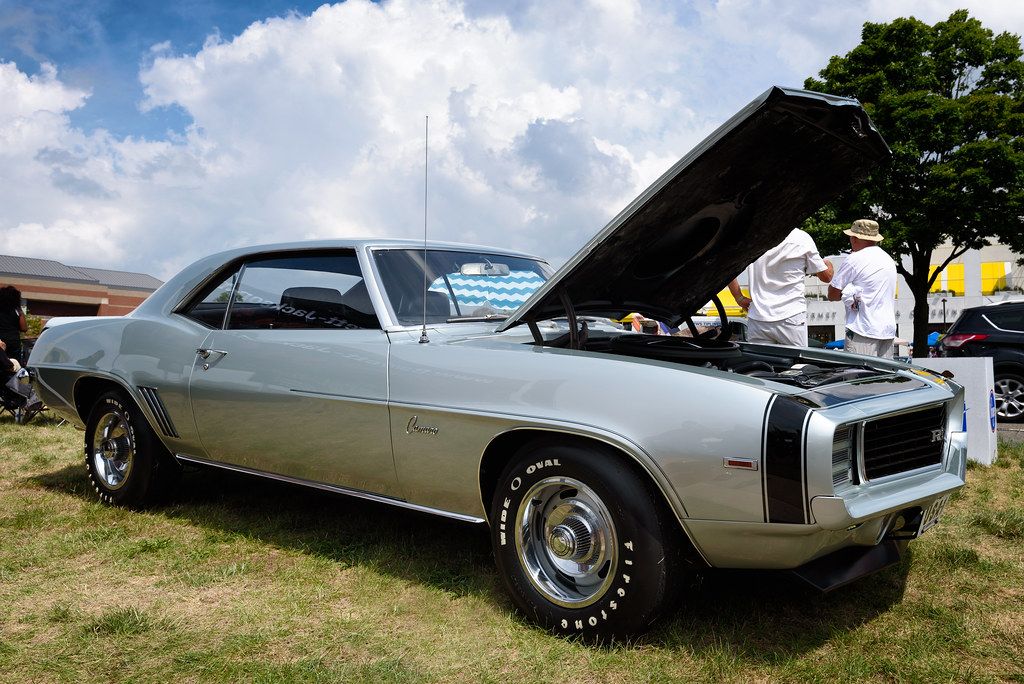
8. **1969 Chevrolet Camaro ZL1: The Track Terror**The 1969 Chevrolet Camaro ZL1 is not just a muscle car; it’s a legendary, fire-breathing unicorn of the asphalt jungle. With a powerful 427 cubic inch V8 engine, it wasn’t merely cranking out around 430 horsepower – it was unleashing a primal scream, making it an absolute beast on the road, ready to tear up any strip or street it encountered. This was Camaro at its most extreme, purpose-built for domination.
This car was part of an incredibly limited production run, with only about 69 units ever made. Think about that: 69 examples of pure, unadulterated performance, hand-built for those who knew exactly what they wanted. Its lightweight construction, thanks to its all-aluminum block, and undeniable racing pedigree set it apart from virtually every other muscle car of its era, marking it as a true collector’s dream.
You’ll instantly appreciate its sleek design, featuring aggressive lines that don’t just hint at its performance capabilities – they shout them from the rooftops. Every curve and angle of the ZL1 was sculpted with speed in mind, giving it a menacing presence that still turns heads today.
The ZL1 quickly became a favorite among enthusiasts who understood its rarity and raw potential. It remains one of the most highly sought-after muscle cars today, a testament to its engineering prowess and the sheer audacity of its creators.
Car Model Information: 2023 Chevrolet Camaro 1LS
Name: Chevrolet Camaro
Manufacturer: Chevrolet
Production: 1966–2002,2009–2023
ModelYears: 1967–2002,2010–2024
Class: Pony car
BodyStyle: coupe,convertible
Platform: GM F platform,GM Zeta platform,GM Alpha platform
Layout: Front-engine, rear-wheel-drive layout
Categories: 1970s cars, 1980s cars, 1990s cars, 2+2 coupés, 2000s cars
Summary: The Chevrolet Camaro is a mid-size American automobile manufactured by Chevrolet, classified as a pony car. It first went on sale on September 29, 1966, for the 1967 model year and was designed to compete with the Ford Mustang. The Camaro shared its platform and major components with the Firebird, produced by General Motors’ Pontiac division that was also introduced for the 1967 model year.
Four distinct generations of the Camaro were developed before production ended in 2002. The nameplate was revived on a concept car that evolved into the fifth-generation Camaro; production started on March 16, 2009.
Production of the sixth generation of the Camaro ended in December 2023, for the 2024 model year.
Get more information about: Chevrolet Camaro
Buying a high-performing used car >>>
Brand: Chevrolet Model: Camaro
Price: $23,965 Mileage: 36,667 mi.

9. **1971 Dodge Challenger R/T: The Last Roar of the HEMI Era**By 1971, the writing was on the wall for muscle cars. Regulations were tightening, insurance companies were getting greedy, and the party was slowly winding down. But Dodge, in typical fashion, wasn’t going down quietly. The 1971 Dodge Challenger R/T, especially when equipped with the legendary 426 HEMI, was a glorious, defiant swan song on steroids. It was Dodge’s final, thunderous statement before the golden age began to fade.
This magnificent machine, with its 425 hp HEMI, a functional Shaker hood that trembled with every rev, and classic E-body aggression, was nothing short of a direct punch to the establishment. It came equipped with a powerful 383 cubic inch V8 engine, delivering an impressive performance with 330 horsepower in its standard R/T guise, but the HEMI elevated it to mythical status.
You could further option it with a four-barrel carburetor for enhanced power, making sure this Challenger was ready for anything. This model also featured an automatic transmission, making it a surprisingly smooth ride despite the beast lurking beneath its hood.
The HEMI engine itself was known for being temperamental, astronomically expensive (adding nearly 50% to the car’s original cost!), and arguably overkill for street use. And that, dear friends, is exactly why real enthusiasts absolutely adored it. It wasn’t about practicality; it was about pure, unadulterated power and presence.
Few were sold – only 71 HEMI Challengers in 1971 – and even fewer survived to this day. But those who drove them knew they were behind the wheel of something truly biblical. Its wide stance, striking Tawny Gold color, and iconic coke-bottle lines gave it visual brawn to perfectly match the brute force under the hood, ensuring its place as a hidden gem and a defiant king.
Car Model Information: 2018 Jeep Grand Cherokee Limited X
Name: Dodge Challenger (1970)
Production: 1969–1974
ModelYears: 1970–1974
Successor: ubl
Caption: 1970 Challenger R/T
Manufacturer: Dodge
Wheelbase: cvt
Length: cvt
Width: cvt
Height: cvt
Categories: 1970s cars, All articles lacking reliable references, All articles needing additional references, Articles lacking reliable references from November 2014, Articles needing additional references from April 2024
Summary: The Dodge Challenger is an automobile produced by American automobile manufacturer Dodge. The first use of the Challenger name by Dodge was in 1959 for marketing a “value version” of the full-sized Coronet Silver Challenger.
From model years 1970 to 1974, the first generation Dodge Challenger pony car was built using the Chrysler E platform in hardtop and convertible body styles sharing major components with the Plymouth Barracuda.
Get more information about: Dodge Challenger (1970)
Buying a high-performing used car >>>
Brand: Dodge Model: Challenger R/T
Price: $19,998 Mileage: 67,042 mi.
Read more about: Burning Rubber and Breaking Hearts: 15 Iconic 1970s Muscle Cars That Still Reign Supreme
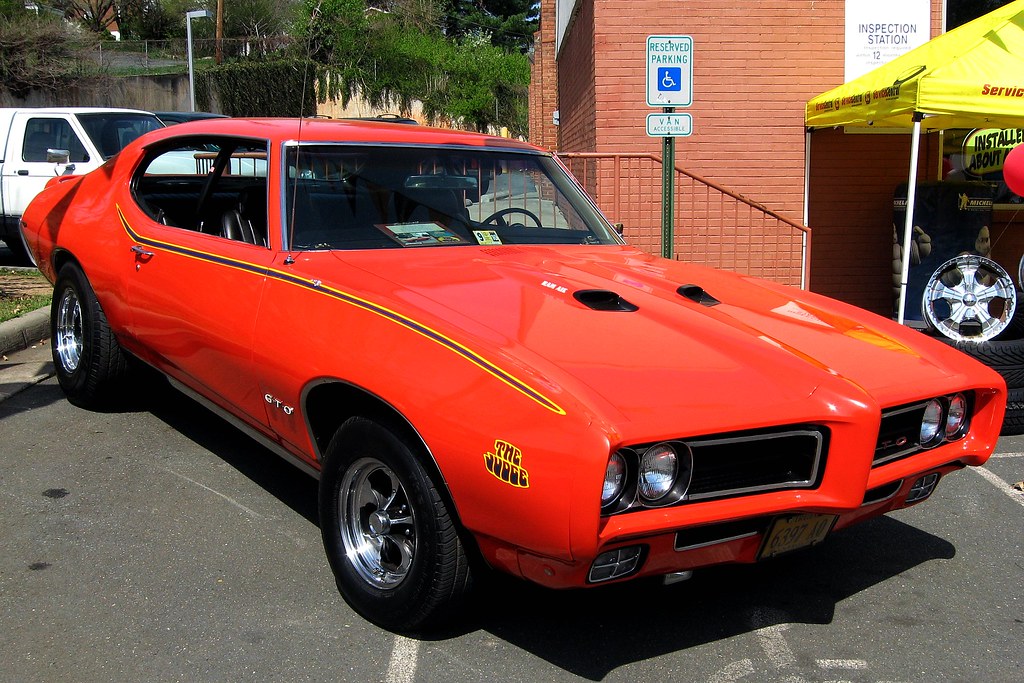
10. **1969 Pontiac GTO Judge: The Verdict is Power**The 1969 Pontiac GTO Judge is a true icon of American muscle, a vibrant and unapologetic declaration of performance that couldn’t be ignored. With a powerful 366-hp L74 D-Port RAM Air III engine, it didn’t just offer impressive performance on the road; it demanded respect with every thundering exhaust note. This wasn’t just a car; it was a character.
This car was expressly designed to compete with rivals like the Plymouth Road Runner, offering a more upscale yet equally potent alternative. It featured a bold design with performance-oriented upgrades that made it stand out in a crowd, proving that Pontiac knew how to combine style with serious substance.
You could literally feel the adrenaline from its distinct styling and raw power. The GTO Judge quickly became a favorite among muscle car enthusiasts for its blistering speed and undeniable flair, often clad in eye-catching paint schemes and adorned with its iconic ‘The Judge’ decals.
Its oversized rear spoiler and functional hood scoops were not just for show; they contributed to its aggressive, road-hugging presence. The Judge was created as a more affordable, yet high-performance, variant of the GTO, making pure muscle accessible to a wider audience.
This unique blend of style and strong performance solidified its place in muscle car history, bringing a bold and colorful flair to the market that was undeniable. It was a GTO that didn’t just walk the walk, it strutted.
Car Model Information: 2018 Jeep Grand Cherokee Limited X
Name: Pontiac GTO
Caption: 2005 Pontiac GTO
Manufacturer: Pontiac (automobile),Holden
Class: Mid-size car,Compact car,Mid-size car
Production: 1963–1974,2003–2006
Predecessor: Pontiac Tempest
Layout: Front-engine, rear-wheel-drive layout
ModelYears: 1964-1974 2004-2006
Categories: 1970s cars, 2000s cars, All articles with unsourced statements, Articles with short description, Articles with unsourced statements from October 2008
Summary: The Pontiac GTO is a front-engine, rear-drive, two-door, and four-passenger automobile manufactured and marketed by the Pontiac division of General Motors over four generations from 1963 until 1974 in the United States — with a fifth generation made by GM’s Australian subsidiary, Holden, for the 2004 through 2006 model years.
The first generation of the GTO is credited with popularizing the muscle car market segment in the 1960s. Some consider the Pontiac GTO to have started the trend with all four domestic automakers offering a variety of competing models.
For the 1964 and 1965 model years, the GTO was an optional package on the intermediate-sized Pontiac LeMans. The 1964 GTO vehicle identification number (VIN) started with 22, while the 1965 GTO VIN began with 237. The GTO was designated as a separate Pontiac model from 1966 through 1971 (VIN 242…). It became an optional package again for the 1972 and 1973 intermediate LeMans. For 1974, the GTO was an optional trim package on the compact-sized Ventura.
The GTO model was revived for the 2004 through 2006 model years as a captive import for Pontiac, a left-hand drive version of the Holden Monaro, itself a coupé variant of the Holden Commodore.
Get more information about: Pontiac GTO
Buying a high-performing used car >>>
Brand: Pontiac Model: GTO Judge
Price: $19,998 Mileage: 67,042 mi.
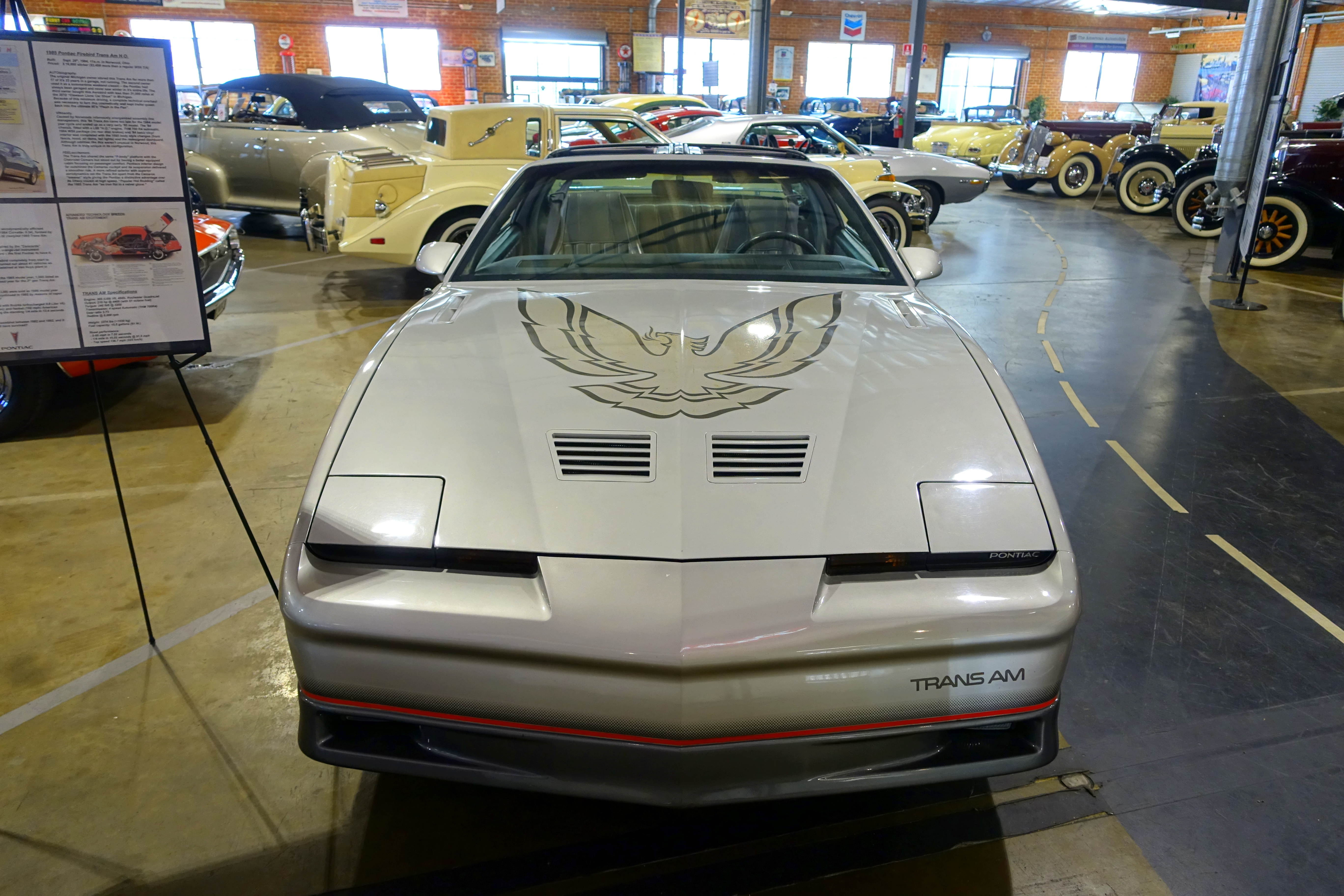
11. **1977 Pontiac Firebird Trans Am: The Smokey Bandit**The 1977 Pontiac Firebird Trans Am roared onto the scene as a classic muscle car that perfectly captured the spirit of American performance, even as the era of peak horsepower began to wane. With its instantly recognizable iconic Starlight Black paint and gold striping, it didn’t just stand out on the road; it dominated it with an undeniable presence. This was a car that simply oozed cool.
Under the hood, it proudly offered a 6.6-liter V8 engine that delivered a respectable 200 horsepower for the time. This wasn’t the insane power of its earlier brethren, but it was still a potent package that combined unmistakable style with solid muscle, making it a favorite among enthusiasts who valued flair and a good time.
The Trans Am also featured unique accents that made it a legend, such as its distinctive gold grille inserts and those iconic snowflake wheels. These details weren’t just cosmetic; they were part of a cohesive design that blended retro charm with a sporty, aggressive stance.
It’s a prime example of the enduring muscle car era, proving that even as times changed, the demand for a powerful, stylish, and fun-to-drive American machine remained strong. This particular Trans Am became a cultural icon, thanks to a certain film, solidifying its place in automotive lore.
Car Model Information: 2018 Jeep Grand Cherokee Limited X
Name: Pontiac Firebird
Caption: The second, third, and fourth generations of,the Pontiac Firebird Trans Am
Manufacturer: Pontiac (automobile)
Production: February 23, 1967 – August 30, 2002
ModelYears: 1967 – 2002
Class: Pony car,Muscle car
Platform: GM F platform
Related: Chevrolet Camaro
Layout: Front engine, rear-wheel-drive layout
Categories: 1970s cars, 1980s cars, 1990s cars, 2000s cars, All articles with dead external links
Summary: The Pontiac Firebird is an American automobile built and produced by Pontiac from the 1967 to 2002 model years. Designed as a pony car to compete with the Ford Mustang, it was introduced on February 23, 1967, five months after GM’s Chevrolet division’s platform-sharing Camaro. This also coincided with the release of the 1967 Mercury Cougar, Ford’s upscale, platform-sharing version of the Mustang.
The name “Firebird” was also previously used by GM for the General Motors Firebird series of concept cars in the 1950s.
Get more information about: Pontiac Firebird
Buying a high-performing used car >>>
Brand: Pontiac Model: Firebird Trans Am
Price: $19,998 Mileage: 67,042 mi.
Read more about: 12 Classic Boomer Cars Millennials Avoid: The Hidden Factors Behind Younger Generations’ Disinterest
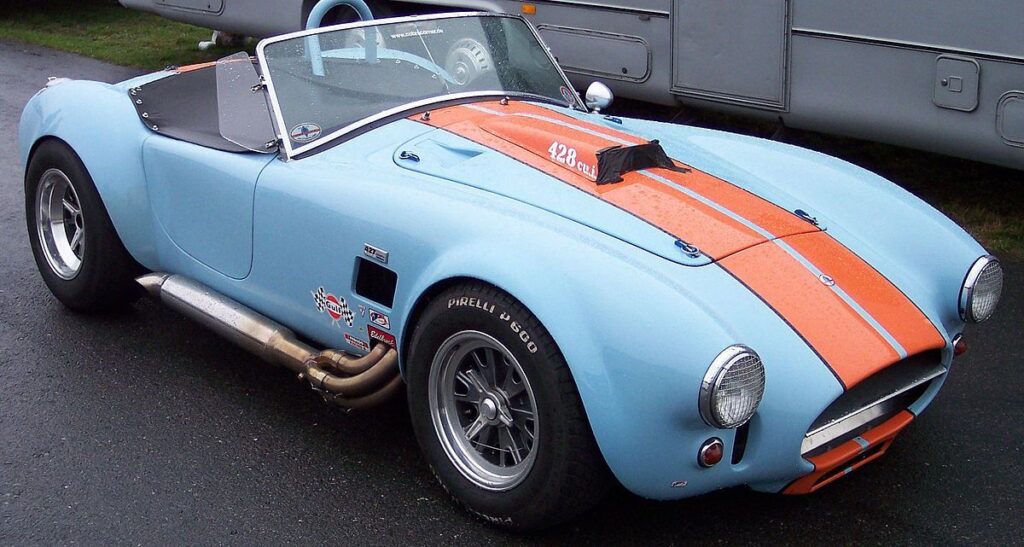
12. **1965 Shelby Cobra 427: The Untamed Roadster**The 1965 Shelby Cobra 427 is a true icon of American muscle, a bare-knuckle brawler in a lightweight, impossibly sleek package. It was a mad scientist’s dream, combining lightweight British design with American muscle to create a truly unstoppable force on the track and street. This wasn’t just a car; it was a weapon.
With a powerful 427 cubic inch V8 engine, it didn’t just churn out around 425 horsepower; it unleashed a thunderous, earth-shaking roar that commanded attention. This beast could often reach 0 to 60 mph in a breathtaking 4.2 seconds, a figure that still embarrasses modern sports cars.
The design is sleek, curvaceous, and unapologetically aggressive, perfectly capturing the untamed spirit of 1960s performance. Its classic lines and undeniable racing heritage make it a perennial favorite among car enthusiasts, a timeless masterpiece of automotive aggression.
You’ll find that its blend of blistering power and raw style is unmatched in the muscle car scene. Despite its compact size, the Cobra had a fierce, almost predatory presence, accentuated by its bold side pipes and low-slung stance, ensuring it was as visually intimidating as it was blisteringly fast.
Driving a Cobra 427 gives you more than just a taste of pure adrenaline; it’s a full-body immersion into automotive history. It’s not just a car; it’s a living legend, a testament to what happens when raw power meets sublime, no-compromise engineering.
Car Model Information: 2018 Jeep Grand Cherokee Limited X
Caption: AC Cobra 427
Layout: front-engine, rear-wheel drive layout
Manufacturer: AC Cars,Shelby American
Production: 1965–1967
Name: MkIII
Aka: AC Shelby Cobra , Shelby AC Cobra
BodyStyle: Roadster (automobile)
Assembly: Thames Ditton,Surrey,England
Predecessor: AC Ace
Class: Sports car
Successor: AC MK IV
Related: AC Frua,Shelby Daytona
Engine: convert,V8 engine
Wheelbase: 90 in
Abbr: on
Order: flip
Length: 156 in
Width: 68 in
Height: 48 in
Weight: 2355 lb
Categories: 1960s cars, AC vehicles, All articles with unsourced statements, Articles with short description, Articles with unsourced statements from December 2014
Summary: The AC Cobra, sold in the United States as the Shelby Cobra and AC Shelby Cobra, is a sports car manufactured by British company AC Cars, with a Ford V8 engine. It was produced intermittently in both the United Kingdom and later the United States since 1962.
Get more information about: AC Cobra
Buying a high-performing used car >>>
Brand: Shelby Model: Cobra 427
Price: $19,998 Mileage: 67,042 mi.
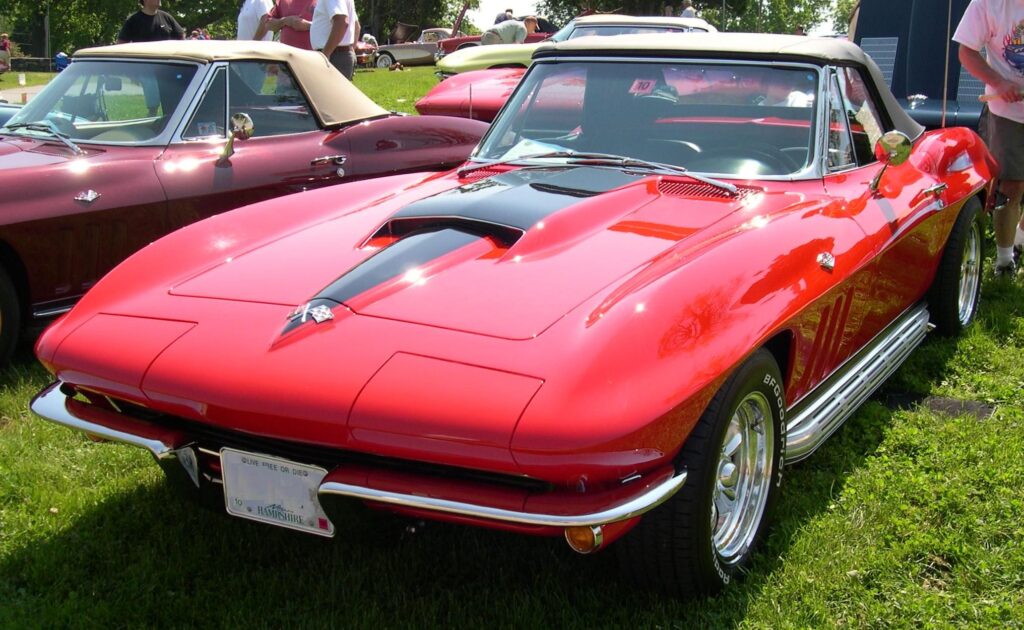
13. **1967 Chevrolet Corvette Stingray: The Sculpted Beast**The 1967 Chevrolet Corvette Stingray is a true classic in the muscle car scene, a perfect fusion of brutal muscle and exquisite sports car design. With its sleek, aerodynamic, and curvaceous body, it doesn’t just capture attention wherever you go; it commands it, making it as much about breathtaking beauty as it was about raw, unadulterated performance. This was art on wheels, with a beastly heart.
Under the hood, you could find options like the monstrous 427 cubic inch L36 V8 engine. This incredible beast could produce up to 435 horsepower, making it an absolute thrill to drive and an unstoppable force on the asphalt, capable of turning rubber into smoke with ease.
Its distinctive look was further enhanced by the Stingray’s signature split rear window – a truly iconic design element – along with its side-mounted exhaust pipes, which added to its aggressive and unmistakable presence. This model quickly became one of the most sought-after Corvettes, a testament to its groundbreaking design and exhilarating performance.
You’ll also enjoy the smooth, precise shifts of the original Muncie 4-speed manual transmission, providing an immersive and raw driving experience that connected driver directly to machine. The combination of formidable power, timeless style, and exhilarating performance truly makes this Corvette a standout example of American muscle, ensuring its status as an undisputed legend.
Car Model Information: 2018 Jeep Grand Cherokee Limited X
Categories: All article disambiguation pages, All disambiguation pages, Disambiguation pages, Short description is different from Wikidata
Summary: Chevrolet Corvette Stingray was the name for several model years of Chevrolet Corvettes:
Corvette Stingray (concept car), concept cars from 1959 and 2009
Chevrolet Corvette (C2), the second generation of the Corvette, introduced in 1963, referred to as the Corvette Sting Ray
Chevrolet Corvette (C3), the third generation of the Corvette, introduced in 1968, referred to as the Corvette Stingray from 1969 through 1976 — in 1968, the Corvette did not have the Stingray badging
Chevrolet Corvette (C7), the seventh generation of the Corvette, introduced in 2014, referred to as the Corvette Stingray
Chevrolet Corvette (C8), the eighth generation of the Corvette, introduced in 2020, referred to as the Corvette Stingray
These generations did not use the name stingray:
Chevrolet Corvette (C1), the first generation of the Corvette, introduced in 1953
Chevrolet Corvette (C4), the fourth generation of the Corvette, introduced in 1984
Chevrolet Corvette (C5), the fifth generation of the Corvette, introduced in 1997
Chevrolet Corvette (C6), the sixth generation of the Corvette, introduced in 2005
Get more information about: Chevrolet Corvette Stingray
Buying a high-performing used car >>>
Brand: Chevrolet Model: Corvette Stingray
Price: $19,998 Mileage: 67,042 mi.
Read more about: Unleash Your Inner Enthusiast (If Your Wallet Allows): 11 Vintage Cars That Will Break the Bank to Restore
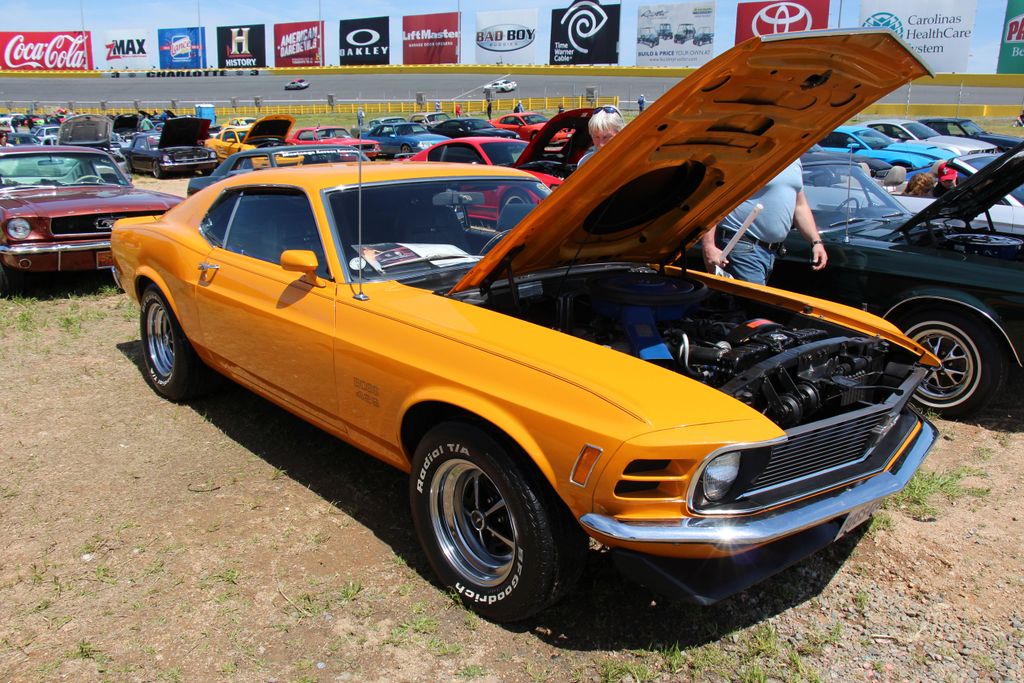
14. **1969 Ford Mustang Boss 429: The Homologation Hammer**The 1969 Ford Mustang Boss 429 is a true heavyweight, a standout in muscle car history that roared onto the scene with a singular, uncompromising purpose. Equipped with a monstrous 429 cubic-inch V8 engine, it delivered a solid 375 horsepower, though many enthusiasts and dynos suspected it was considerably more potent in reality. This was Ford’s answer to the Hemi, and it was glorious.
This was no ordinary Mustang; it was a homologation special, originally built to meet stringent NASCAR requirements, specifically to allow Ford to run its powerful ‘semi-hemi’ 429 engine in competition. This direct, undeniable link to the race track gave it an instant, unshakeable pedigree and an aura of pure, uncompromised performance.
With only 1,359 units ever produced, this rare beast is now highly sought after by collectors, a genuine unicorn of the muscle car world. Its low production numbers and competition lineage make it a crown jewel in any serious automotive collection, a testament to its exclusivity and historical significance.
When it debuted, the price was around $4,087, which would be about $33,000 today – a considerable sum for its time, but an absolute bargain for the raw power and exclusivity it offered. Its aggressive styling, with that unmistakable, purposeful hood scoop and flared fenders, overtly hinted at the pure, unadulterated performance lurking beneath.
The Boss 429 wasn’t just a car; it was a thunderous statement, a snarling embodiment of Ford’s unwavering commitment to dominating the race track and conquering the streets. It cemented its place as a true icon that continues to command respect and awe decades later, a testament to a time when racing truly shaped what rolled off the assembly line.
Car Model Information: 2018 Jeep Grand Cherokee Limited X
Caption: 1969 Boss 429
Layout: Longitudinal engine
Manufacturer: Ford Motor Company
Production: 1969–1970
Name: Mustang Boss 429
Class: Muscle car
BodyStyle: coupé
Assembly: Dearborn, Michigan
Height: 50.4 in
Abbr: on
Length: 187.4 in
Width: 71.7 in
Engine: 429 cuin
Transmission: manual transmission
Weight: 3870 lb
Categories: All Wikipedia articles needing clarification, All articles needing additional references, All articles with unsourced statements, Articles needing additional references from August 2008, Articles with short description
Summary: The Boss 429 Mustang is a high-performance Ford Mustang variant that was offered by Ford in 1969 and 1970. It featured a race-designed 429 cu in (7.0 L) semi-hemispherical head version of the big block 429 V8, offered in the car both to homologate the engine for NASCAR racing and to offer a bigger, more-powerful version of the popular small block 5 L Boss 302 Mustang.
The price of all the performance and modifications was steep: at nearly $5,000 a Boss 429 was roughly twice the price of the base model inline-6 Mustang. A total of 1,359 Boss 429s were produced.
Get more information about: Boss 429 Mustang
Buying a high-performing used car >>>
Brand: Ford Model: Mustang Boss 429
Price: $19,998 Mileage: 67,042 mi.

15. **1971 Oldsmobile 442: The Refined Powerhouse**The 1971 Oldsmobile 442 emerges from the twilight of the muscle car era as a true heavyweight, a classic that still packs a phenomenal punch without needing to shout about it. Powered by a colossal 455 cubic-inch (that’s a full 7.5 liters!) V8 engine, it delivered an impressive 350 horsepower, often conservatively understated by factory figures, making it a serious contender on any road.
This wasn’t just about raw grunt; this model featured a distinct design with aggressive lines and a sporty, wide stance that simply commanded attention with an air of sophisticated menace. While some rivals relied on outlandish wings and garish stripes, the 442 achieved its powerful presence through refined muscularity and clean, purposeful styling.
You could expect a truly thrilling performance, a visceral experience of torque and acceleration, with a muscle car pedigree that was simply hard to beat. It offered a sophisticated blend of speed and handling, ensuring it felt as composed and satisfying to drive as it looked. This was a car that could embarrass flashier rivals with quiet efficiency.
With its unique combination of formidable power, understated style, and surprising comfort, the 1971 442 remains a firm favorite among collectors and enthusiasts alike. It proved that a muscle car could be both a street brawler and a comfortable, capable cruiser, a dual personality that was truly ahead of its time.
This magnificent machine truly captures the unyielding spirit of American performance cars from its glorious era, a testament to Oldsmobile’s ability to build a powerful, desirable, and enduring legend just as the golden age began to fade into history. It’s an understated king that still reigns supreme.
When Chrome, Gas, and Grit Ruled the Roads
The Golden Age of Muscle Cars was more than just a chapter in automotive history; it was an attitude, a rebellion on wheels. From the Pontiac GTO that kicked off the horsepower arms race to the Dodge Challenger HEMI that screamed defiance as the sun set on the era, these machines were moving, roaring monuments to American excess and ingenuity.
They were loud, proud, and unapologetically American. No traction control, no touchscreen infotainment, no hybrid badges — just a glorious V8 heartbeat, a manual shifter (if you were lucky), and a rearview mirror full of smoke.
The cars from this coveted collection defined a generation of drivers who believed in speed over subtlety, and rumble over refinement. The essence of this era was pure, unadulterated presence, beyond any considerations of efficiency or practicality. Today, they’re often museum pieces, pampered garage queens, and six-figure auction stars, but in their heyday, they were just cars you could race on Friday night and drive to work on Monday.
Car Model Information: 1969 Oldsmobile 442
Name: Oldsmobile 442
Manufacturer: Oldsmobile
ModelYears: 1964–1980,1985–1987,1990–1991
Class: Muscle car
Layout: FR layout
Caption: 1971 Oldsmobile 442
Categories: 1960s cars, 1970s cars, 1980s cars, All articles with unsourced statements, Articles with short description
Summary: The Oldsmobile 4-4-2 is a muscle car produced by Oldsmobile between the 1964 and 1987 model years. Introduced as an option package for US-sold F-85 and Cutlass models, it became a model in its own right from 1968 to 1971, spawned the Hurst/Olds in 1968, then reverted to an option through the mid-1970s. The name was revived in the 1980s on the rear-wheel drive Cutlass Supreme and early 1990s as an option package for the new front-wheel drive Cutlass Calais.
The “4-4-2” name (pronounced “Four-four-two”) derives from the original car’s four-barrel carburetor, four-speed manual transmission, and dual exhausts. It was originally written “4-4-2” (with badging showing hyphens between the numerals), and remained hyphenated throughout Oldsmobile’s use of the designation. Beginning in 1965, the 4-4-2s standard transmission was a three-speed manual along with an optional two-speed automatic and four-speed manual, but were still badged as “4-4-2″s.
Because of this change, from 1965 on, according to Oldsmobile brochures and advertisements, the 4-4-2 designation referred to the 400 cubic inch engine, four-barrel carburetor, and dual exhausts. By 1968, badging was shortened to simply “442”, but Oldsmobile brochures and internal documents continued to use the “4-4-2” model designation.
Get more information about: Oldsmobile 442
Buying a high-performing used car >>>
Brand: Oldsmobile Model: 442
Price: $43,990 Mileage: 24,000 mi.
Read more about: Burning Rubber and Breaking Hearts: 15 Iconic 1970s Muscle Cars That Still Reign Supreme
We remember them not just for their horsepower or hood scoops, but for what they represented: freedom, raw expression, and the sheer thrill of a green light. In an age of EVs and quiet zones, the thunder of these classics still echoes, a powerful reminder that once upon a time, American roads were ruled not by algorithms, but by pure, unadulterated muscle. Which one would you have parked in your driveway, and why would it definitely be the HEMI? Let us know!

